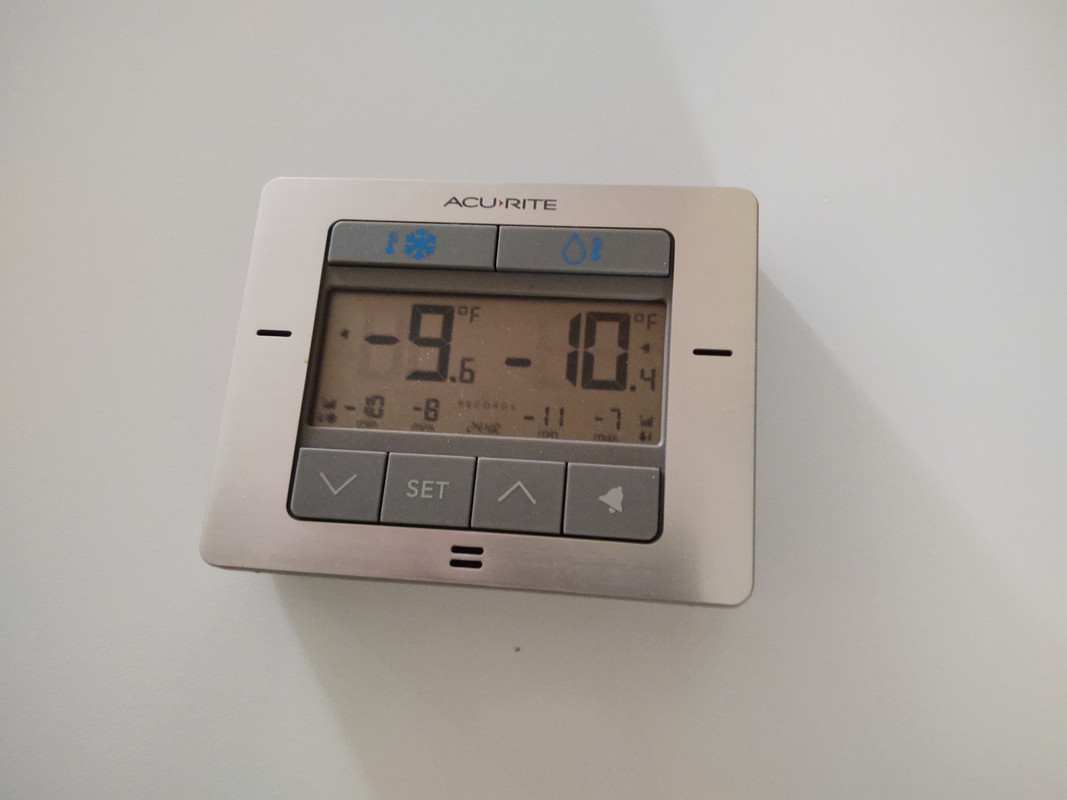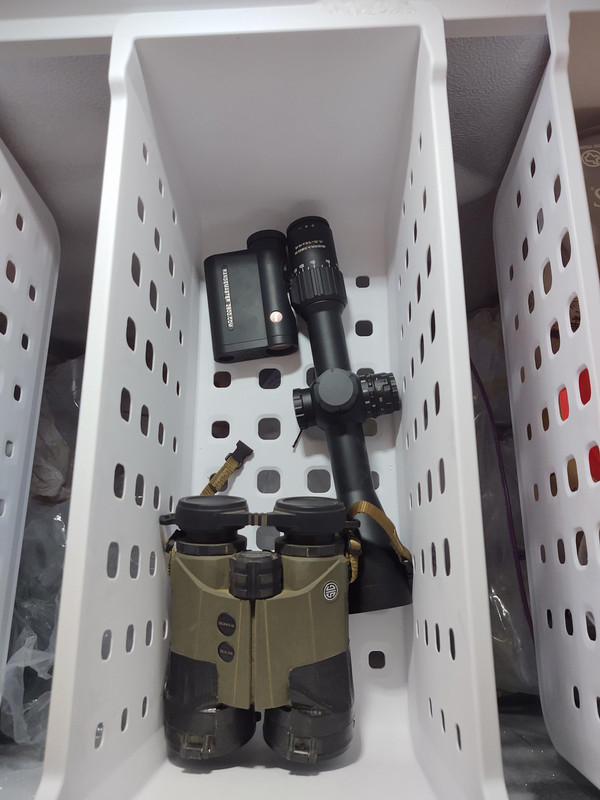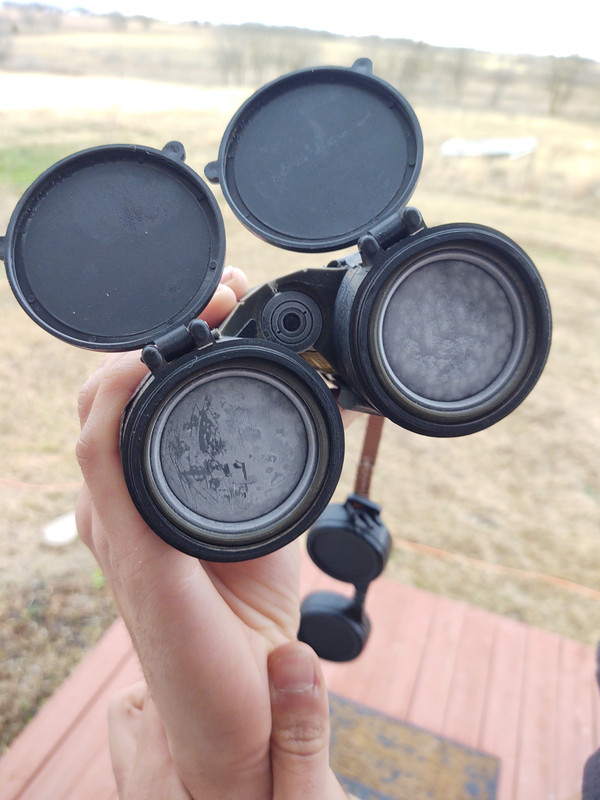On another thread, the question came up this morning about some RF's not working well in freezing conditions, and there was some question around how the BDX system would work under freezing conditions, particularly in terms of communication and also being able to see the dots. Some had heard that the brightness faded, so the holds could not be seen clearly when used below freezing. We have used our Leicas and our Sig BDX stuff (3k RF and Sierra 3) in sub freezing temps without issue, and we don't keep them near our bodies, so they are very cold, but never sub 0 for very long, so I wanted to see what would happen.
This was sort of an off the cuff conversation this morning, but I had some time so did a quick and dirty test, it's certainly not conclusive but hopefully it's helpful. As we don't have anything like freezing temps just now where I am, I tossed them in my deep freeze that runs between -8F and -13F.

I put a Sierra 3, my 3kBDX, and my Leica 2800 in there and left them for 3 hours. I then took them out and tested to see if the electronics responded, and in the case of the BDX stuff, if they communicated and worked.

The problem was that because they were so cold and today's temps were in the 60's and rainy, the glass, including that over the laser, immediately froze over with frost. So not only could I not see what I was aiming at, the laser could not fire through the emitter window.

I tried wiping it off, but the units were so cold that they froze up again almost immediately. Eventually, I was able to get my son to help so we could wipe it off and immediately range in the short window before they refroze. Long story short, both the Leica and the 3k BDX ranged fine.

As for the scope, it connected to the 3k as it should. However, I noted the dots were somewhat dim, but quickly realized that this was due to frost over the eyepiece. Once I wiped it clean, for the few seconds it was frost free, it was as bright as always.

So in short, in at least this limited testing, they all worked just fine, we had no problems.
My guess, and it's only a guess, is that folks having problems might be spending a lot more time in the super cold than just 3 hours, and in that case, the batteries are getting too cold to function properly, lithium or not. I have seen this happen with my Kestrel, where it 'loses' most of it's battery, but it returns once things warm up.
I have an extra Sierra 3, so I might just take it and leave it in the deep freeze for a day or two and see what happens to the battery, but at least from this little test, a few hours in sub zero temps doesn't appear effect anything, providing your glass is not covered by ice or other precipitation.
This was sort of an off the cuff conversation this morning, but I had some time so did a quick and dirty test, it's certainly not conclusive but hopefully it's helpful. As we don't have anything like freezing temps just now where I am, I tossed them in my deep freeze that runs between -8F and -13F.

I put a Sierra 3, my 3kBDX, and my Leica 2800 in there and left them for 3 hours. I then took them out and tested to see if the electronics responded, and in the case of the BDX stuff, if they communicated and worked.

The problem was that because they were so cold and today's temps were in the 60's and rainy, the glass, including that over the laser, immediately froze over with frost. So not only could I not see what I was aiming at, the laser could not fire through the emitter window.

I tried wiping it off, but the units were so cold that they froze up again almost immediately. Eventually, I was able to get my son to help so we could wipe it off and immediately range in the short window before they refroze. Long story short, both the Leica and the 3k BDX ranged fine.

As for the scope, it connected to the 3k as it should. However, I noted the dots were somewhat dim, but quickly realized that this was due to frost over the eyepiece. Once I wiped it clean, for the few seconds it was frost free, it was as bright as always.

So in short, in at least this limited testing, they all worked just fine, we had no problems.
My guess, and it's only a guess, is that folks having problems might be spending a lot more time in the super cold than just 3 hours, and in that case, the batteries are getting too cold to function properly, lithium or not. I have seen this happen with my Kestrel, where it 'loses' most of it's battery, but it returns once things warm up.
I have an extra Sierra 3, so I might just take it and leave it in the deep freeze for a day or two and see what happens to the battery, but at least from this little test, a few hours in sub zero temps doesn't appear effect anything, providing your glass is not covered by ice or other precipitation.


